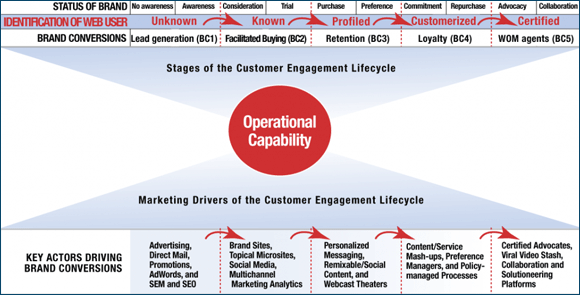Remember not too long ago I blogged about affiliate marketing’s place in the overall digital marketing?
Back then I stated that affiliates participate effectively not only on the acquire stage, but “also help in the branding (let’s not forget those link impressions that aren’t being paid for), retaining and growing the current customer base, as well as converting.”
Today I was happy to find a chart which outlines the stages of online customer engagement lifecycle, listing also the marketing drivers that facilitate conversion on each stage (click the below image to enlarge):
The above chart provides an excellent visualization of the roles that various types digital marketing play in driving conversions. Of course, one may argue that some of the above-mentioned “key actors” (e.g.: AdWords, Social, SEO, etc) work well on all stages (and I would agree). Also, when I look at the above figure, I see affiliate marketers working well on all 5 stages: (i) lead generation (all possible types of affiliates), (ii) facilitated buying (topical microsites, and social media affiliates), (iii) retention (various content affiliates, and personalized shopping websites), (iv) loyalty (loyalty and rebates affiliates), and even (v) WOM agents. The reason is the same as I have mentioned elsewhere: Affiliate marketing is not a type of marketing (like social media marketing, PPC, content, display, SEO, email marketing, etc) but rather a name for the type of business relationship/partnership between a marketer and an online (or now even offline) business being marketed — one where the former is being paid by the latter based on the performance / conversions driven in.
